Developed and maintained by Slack Technologies, Slack is an instant messaging platform that ranks among the best communication platforms for organizations and companies.
It offers a plethora of features to allow users to easily communicate and work as a unified team on various projects.
Slack has gained popularity among business professionals due to its simplicity, user-friendliness, and ease of customization. In addition, it is cross-platform and can be installed across multiple devices such as Windows, Linux, macOS, Android, and iOS.
However, Slack competitors still aim to have a chunk of the market. Today we get to look at the best slack alternatives for 2024. Here are the leading options out there.
1. Google Chat
Released by Google as a replacement for Hangouts, Google Chat is one of the best free Slack alternatives for teams looking to boost their productivity. The Google Chat service is built into a Gmail account which anyone can open for free.
Once you sign up for Gmail, you automatically join Google Chat which provides similar functionality as Slack. With Google Chat, you can integrate your team and enjoy video or audio call options from the virtual rooms for teleconferences.
Google’s Chat platform also provides third-party app integration to increase optimization for team members.
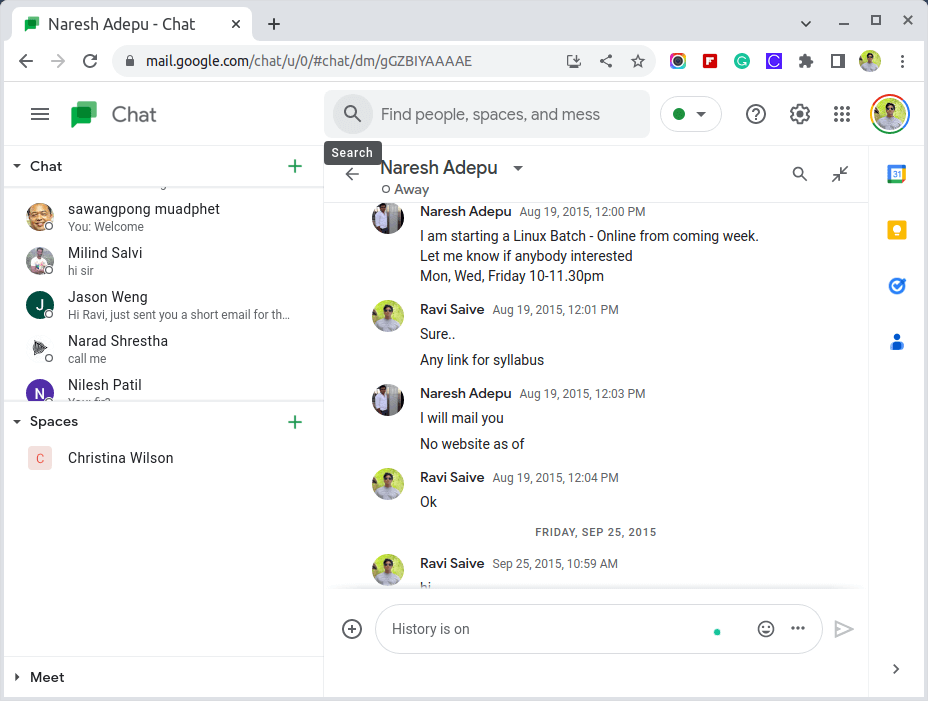
Price: Free to Gmail Users
2. Microsoft Teams
Microsoft Teams is a fully-featured and proprietary business communication platform that bundles a range of functionalities including video conferencing, video telephony, chat, and online meetings to mention a few.
It provides all the features required by business professionals to stay in touch, streamline their workflow and boost their productivity.
Being a Microsoft product, Microsoft Teams provides users with integrations for all Office 365 products plus other 250 services and applications. This makes it possible for users to always keep track of their projects on the cloud from wherever they are.

Price: Free for home users, and $4 per user per month for business.
3. Rocket Chat
Rocket Chat is another open-source option competing with Slack in creating a digital workspace through its comprehensive set of features and tools. It’s a privacy-centric communication and collaborative platform that is used by over 12M users in over 150 countries.
Rocket is famous for its vast array of customization capabilities and end-to-end data encryption. In addition, it allows users to alter their source code and add new features to their team’s preference.
Customizing the platform will enable units to transform basic features such as video or audio calling features and include standout features, such as real-time translation and data encryption between teams.
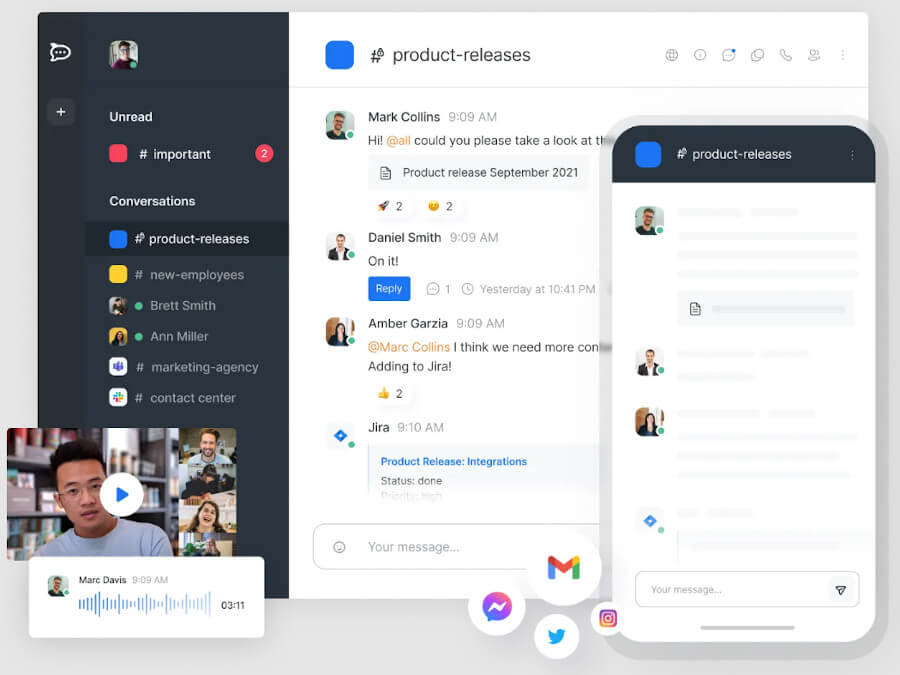
4. Discord
Discord already has a massive following in the gaming community thanks to its capability to integrate team communications. It’s a popular and hugely successful VoIP and IM platform that has been widely adopted in the gaming community.
Besides being a favorite in the gaming community, Discord has made a foray into the business and content-creation, and entertainment community thanks to its rich set of features in team communication.
Using Discord goes beyond the essential chat tools for voice or video chats. Discord is famous for its twist on the voice chat segment. Inside the app, users get the option of a voice chat alongside push-to-talk capabilities which enhance direct communications.
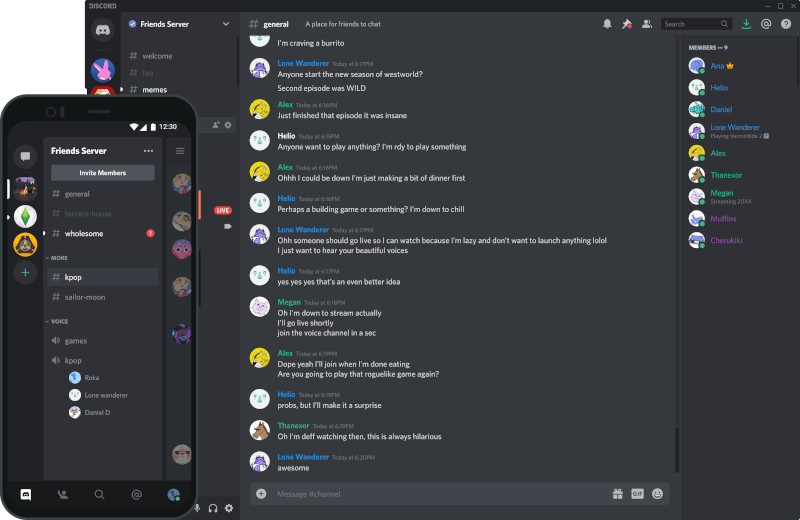
Price: Free for users, and $9 per user per month for advanced features.
5. Chanty
Chanty‘s perks include the unlimited chat history feature, which allows endless team chats among members. The app is also becoming popular for its AI-Powered tools, which make use even more effective.
For example, Chanty supports auto-fill when searching for members or past messages from the history. The AI tools can also recreate responses to messages for you and, in turn, save you the effort of typing long messages.
Most of all, you can still trust Chanty to provide the basic team chat features of voice calling, screen sharing, and even third-party integration.
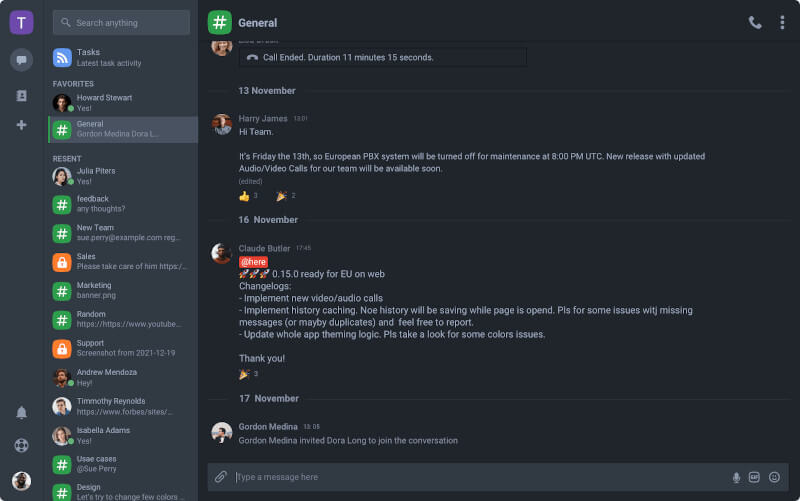
Price: Free for up to 5 members, $3 per user per month.
6. MatterMost
Mattermost is an open-source and secure collaboration and communication platform designed for companies and organizations. It guarantees a customizable product with cloud hosting and server management alongside it.
Mattermost’s customization is a central selling point since you can modify the source code, APIs, and even libraries.
Chat options are another critical perk, with Mattermost relying on the fact that you can add privacy options with this app’s multi-factor authentication.
File sharing is secure with public and private chat options having multi-factor authentication. Integration with third-party applications is another prominent feature, with Mattermost providing over 700 app integrations.
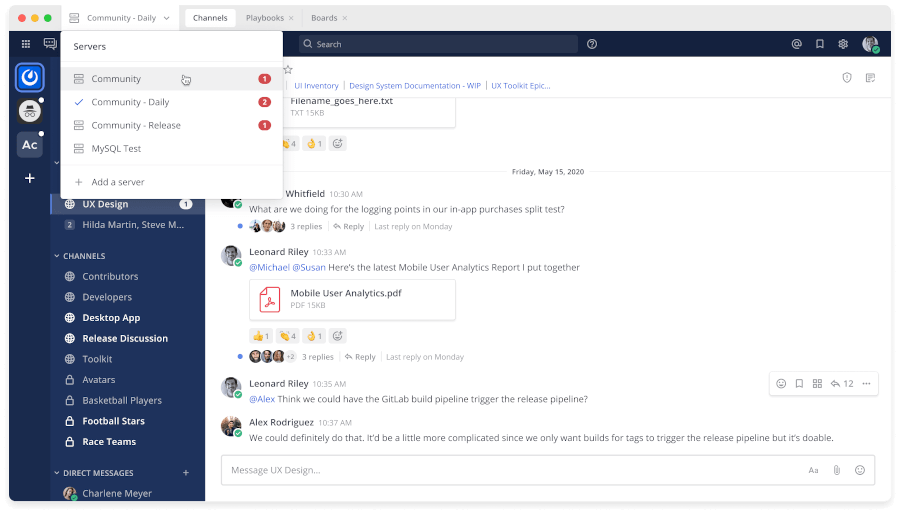
Price: Free up to 10 users, and $10 per user per month for additional features.
7. Ryver
Like Slack, Ryver is a team communication solution that uses open forums, direct messaging, and private groups. The app also bears basic Slack options for voice and video calls among users. However, Ryver limits both calls to 5 users per call for the best communication result.
Apart from essential project management, unlimited chat records, tasks, and personal board creation are other options to look out for here. These options provide users with endless chat options and the ability to customize chat profiles to suit their team goals.
Security-wise, Ryver can integrate with many third-party applications and remain secure enough since the app uses an SSO option.
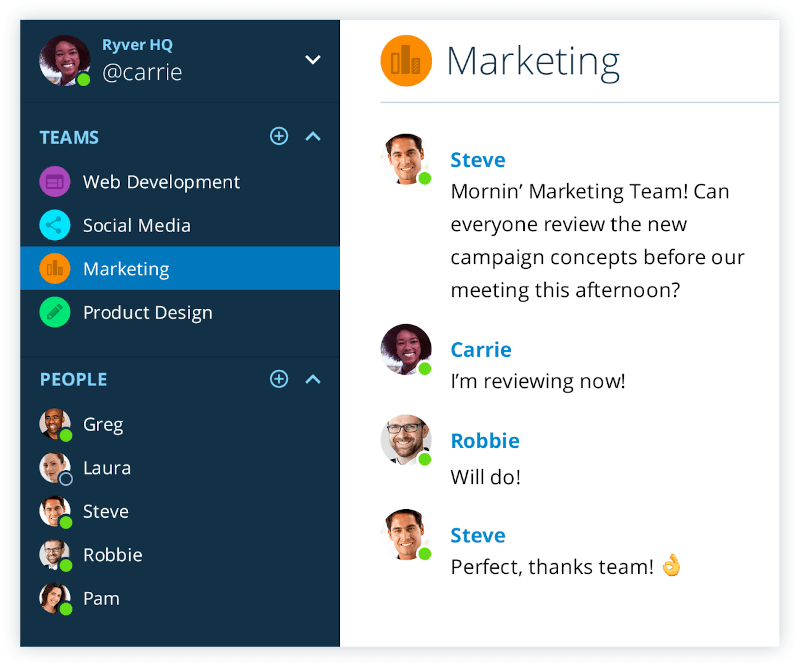
Price: $69 per month for 12 users, and more advanced plans are available.
8. Flock – Team Chat Software
Flock is the go-to Slack alternative for colleagues looking for a simplistic but advanced workplace chat solution. From the outlook, Flock fits such a reputation thanks to its various features for all workplace teams.
It’s a team communication app and collaboration platform that offers an array of features for standard communication options, including chat, video, and audio calls. Flock users also enjoy unique built-in features such as polls, reminders, and to-do snippets plus notes.
The paid plans take useful features a notch higher by providing screen sharing and complete message history plus search.
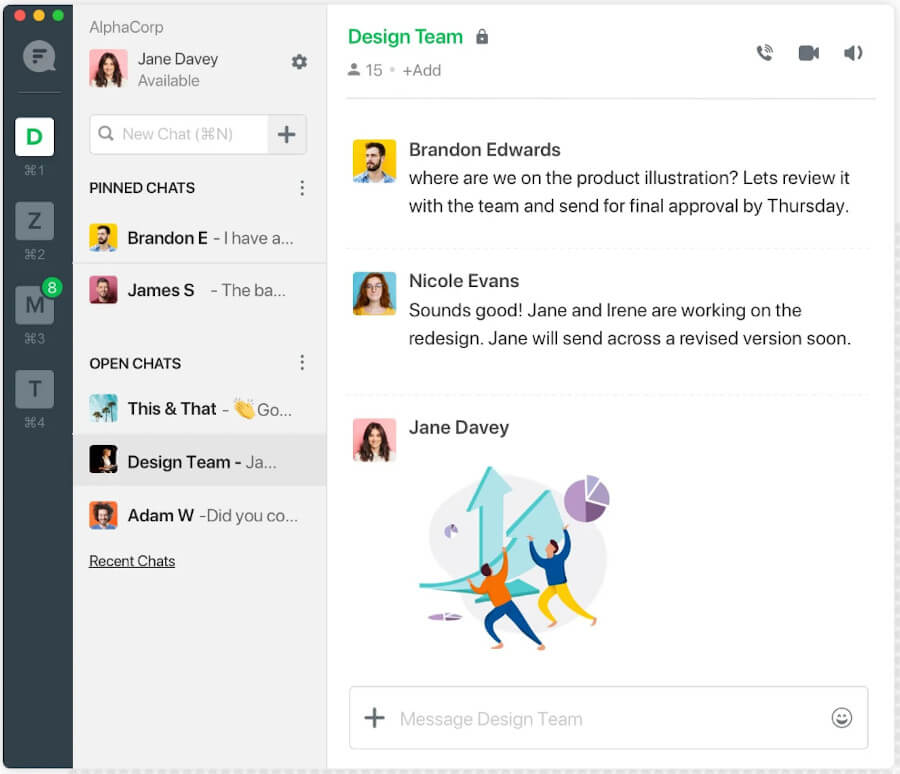
Price: Free up to 20 users, and $4.50 per user per month for additional features.
9. Fleep
Fleep focuses on creating an actionable chat conversation with a minimalistic design among users participating. Fleep achieves this actionable chat with features such as task and pinboard to allow users easy chat access.
Your chat access also features unlimited one-on-one conversations, allowing users to view important updates through the read receipts option for messages.
There is also the guarantee of an extensive integration feature with workspace members able to communicate with other Fleep users through its open network concept and cross-collaboration.
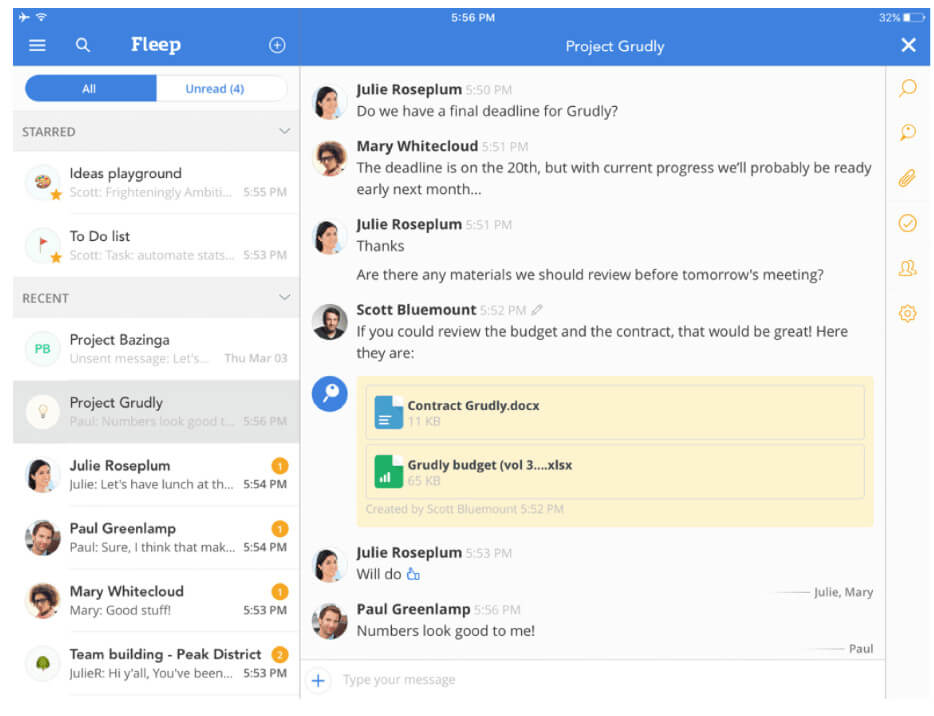
Price: Free for basic usage and $5 per user per month for additional features.
10. Glip
With Glip, users get the guarantee of multitasking across solutions with less time wasted on different areas for teams. The centralized management further fosters collaboration of features to include options such as notes, calendars, and tasks.
Such an approach makes Glip a one-size fits all tool for teams where you get over 20 customizable integrations using this Slack alternative.
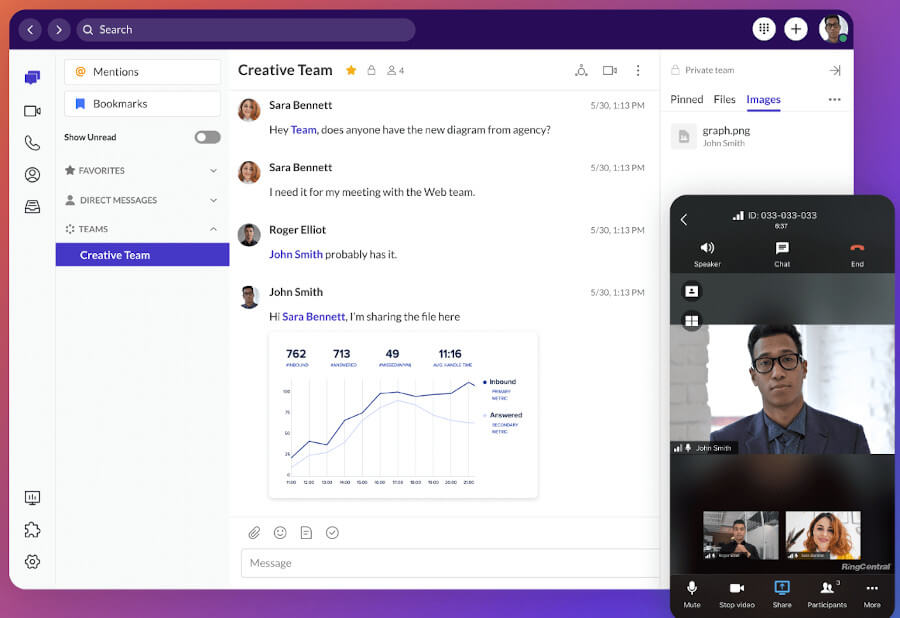
Price: Free for up to 100 users, and $32.99 for up to 20 users for additional features.
11. Troop Messenger
Like most of the other team communication tools, Troop Messenger offers basic chat, and video and audio calling. In addition to this, you can share your screen with fellow team members for easier reference points. The remote desktop control offers a wide range of access for users that want more security.
On the paid version, you can access “burnout” which allows users to collaborate on something in a private post. Other features include audio and video calls as well as instant messaging for one on one messaging. Depending on your preference you can also have team conversations and group chats.
Troop Messenger is a secure collaboration tool that supports end-to-end encryption.
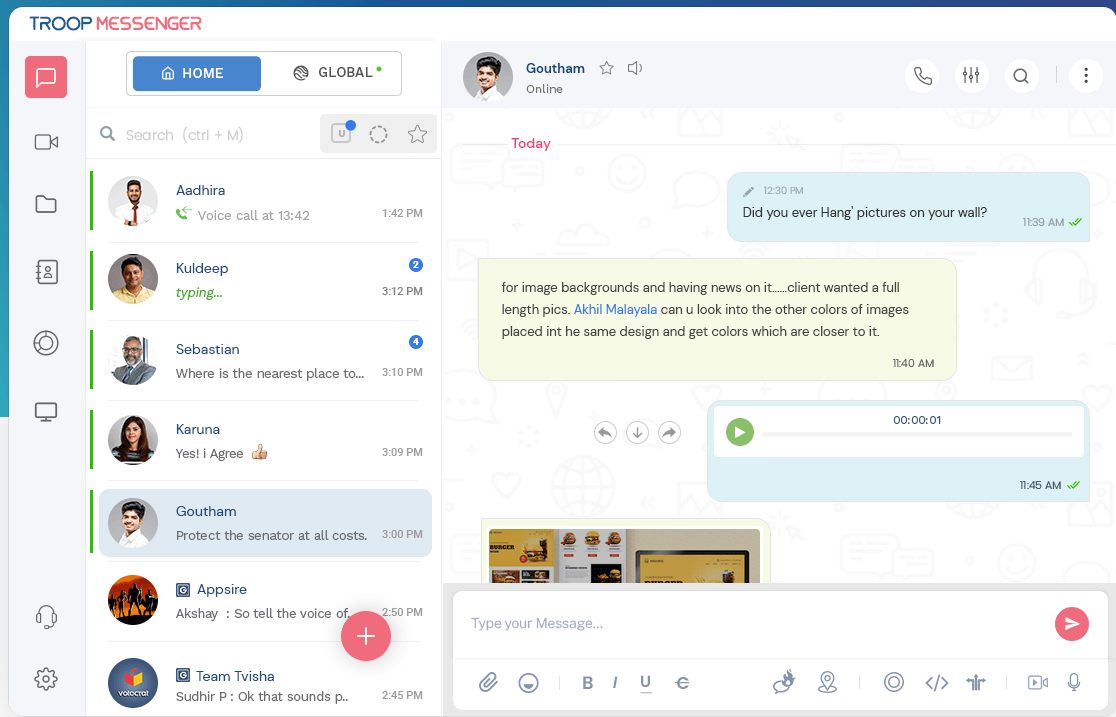
12. Twist
Twist was developed by the same team that created Doist. While most team communication software focuses on incorporating real-time messaging with other features twist’s approach is to put more focus on structured communication forms.
It achieves this through “threads”, with each thread allocated to a particular conversation topic. Chat-wise, you can have small group chats and one-on-one chats where you can utilize shareable link threads. Twist also provides access to third-party integrations, plus an inbox with all the latest updates.

13. Hive
Hive does not quite fit into the messaging tool category as it largely focuses on project management features and tools that enable you to design, assign and follow up on projects through the app.
Hive ensures that users and their teams stay on top of projects while engaging in real-time conversations on the side via the in-app messenger. Other hive features include, directly assigning team members tasks, tracking project progress, and creating a personalized to-do list.
On top of the one-on-one messaging and group chat options Hive also supports integration with third-party software.

14. JANDI
According to its developers, JANDI is a collaboration app tailored to suit the modern workforce. This tool makes communication speedy and convenient via real-time messaging, in addition to integration with several popular third-party apps.
Some of its other features include a rich admin panel, custom emojis, filesharing and management, 1: 1 chat as well as group conversations.

15. HighSide
Formerly known as ClearChat, HighSide is a high-security team communication tool for users with a focus on privacy. Highside provides businesses with an environment where they can share confidential or regulated data. According to HighSide, the platform is immune to phishing, man-in-the-middle SSL attacks, and spoofing.
HighSide has a wide array of cool features including file-sharing capabilities, direct messaging, custom data retention strategies, and team communication. Highside is a highly secure platform that also supports end-to-end encryption.
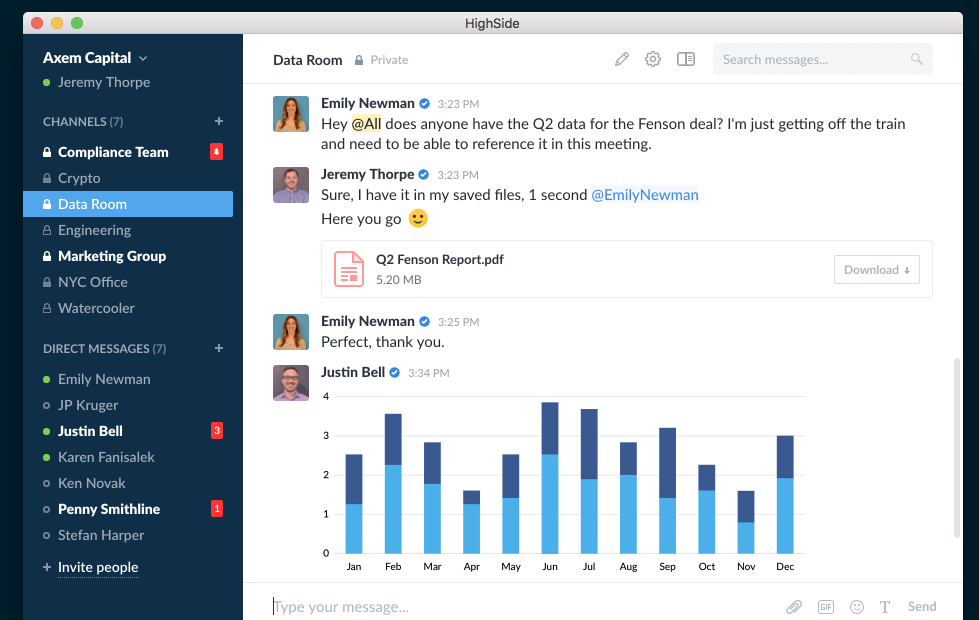
16. Wire
Wire started as a secure instant messaging app. But the addition of various capabilities has transformed it into one of the most popular collaboration tools in the communications marketplace.
Apart from its high level of security Wire’s catalog of features include 1:1 and group conversations, sketch image editing, end-to-end encryption, self-destruct messages audio, and video calls together with team admin features.
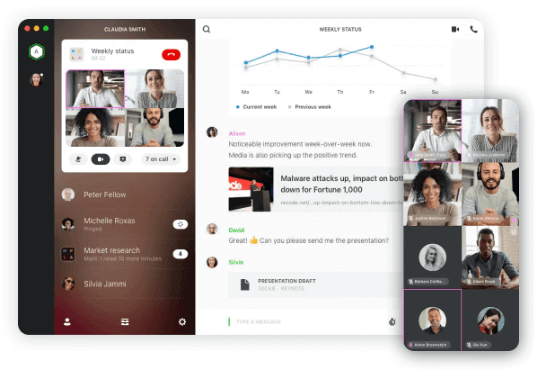
17. Quip
Quip is a great tool for combining your documents, checklists, and spreadsheets into one advanced team-chat environment. Quip doesn’t solely focus on team chats like the majority of team communication solutions but integrates chat features with spreadsheets documents as well as other capabilities.
Its key features include spreadsheets for teams, chat built into everything, sales force integration, and document sharing and collaboration.
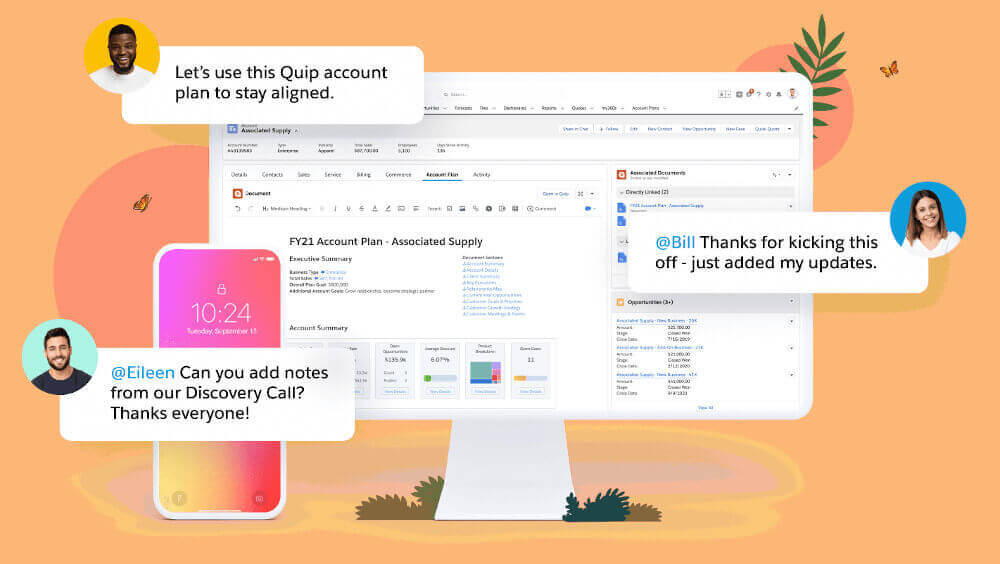
18. Twake
Twake is a secure open-source collaborative platform designed to improve your teams’ organizational efficiency and boost overall productivity.
Twake is a perfect alternative to Microsoft Teams and ships with a suite of collaborative features including a calendar, task management, real-time document collaboration, a drive to share and store files as well as end-to-end encryption for video meetings.
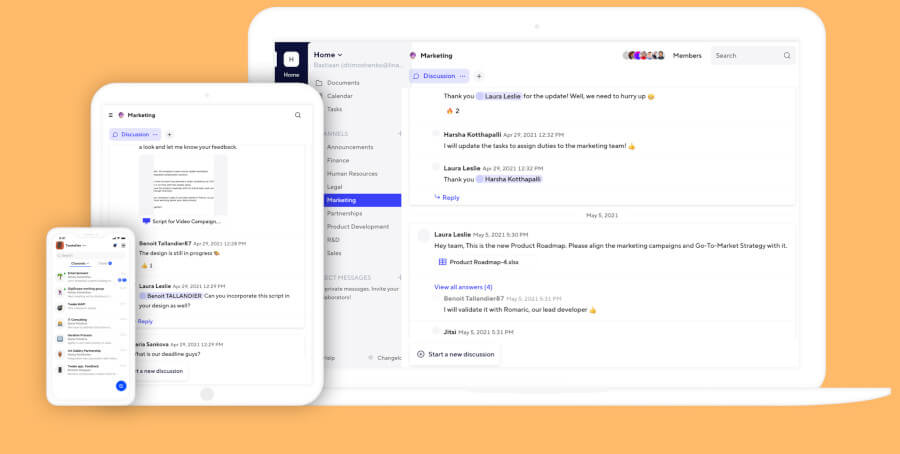
19. Spike
Spike transforms your email into a dynamic productivity tool. Spike works with your email eliminating the need for you to move your project or team to a different management platform or chat.
It incorporates productivity tools, like, calendars, voice calls video meetings, collaborative notes, to-do-list, and more into one app that is available across all devices.
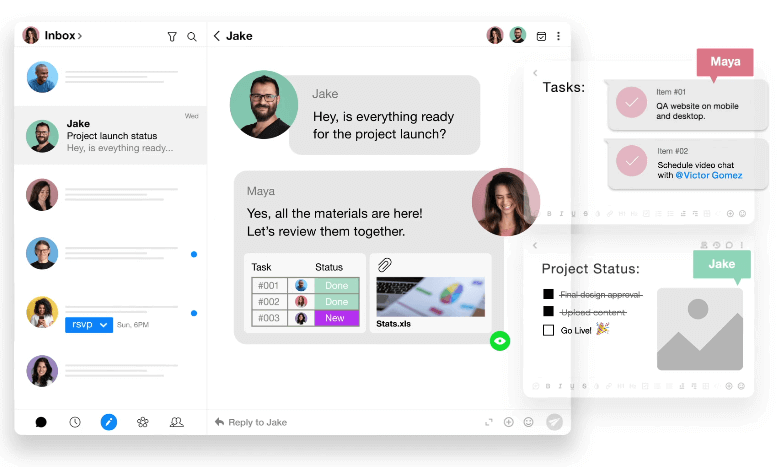
20. Element
Element is an end-to-end encrypted, matrix-based secure collaboration tool that doubles up as messaging app. It provides a suite of tools such as audio and video calls, real-time messaging, file sharing, and screen sharing for one-to-one conversations in huge chat rooms.
Since it is matrix-based, Element allows for integration with third-party siloed apps. It is also end-to-end encrypted to enhance security and privacy.

21. Zulip
Zulip is an open-source team collaboration app with distinctive topic-based threading that incorporates the best features of email and chat to ensure ease and productivity in remote work.
Some of its notable features include read receipts, marks as unread, starred messages, statistics, and much more.
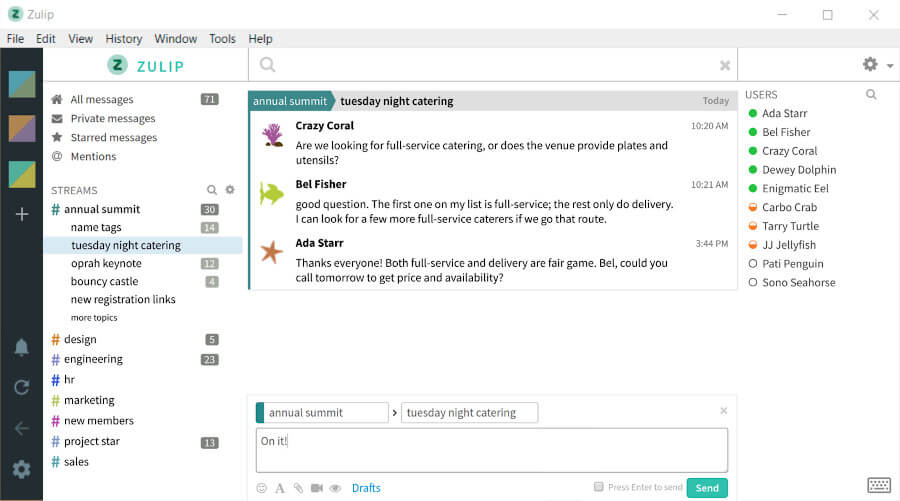
When choosing the suitable Slack alternative, you can refer to our list for various options. The apps we have covered are among the best Slack alternatives for 2024 and guarantee excellent team collaboration and integration. All it takes is to have in-depth information and identify which Slack alternative fits your situation.
This wraps up this guide on the best Slack alternatives. Have we left any that you think should have made it to the list? Do let us know.




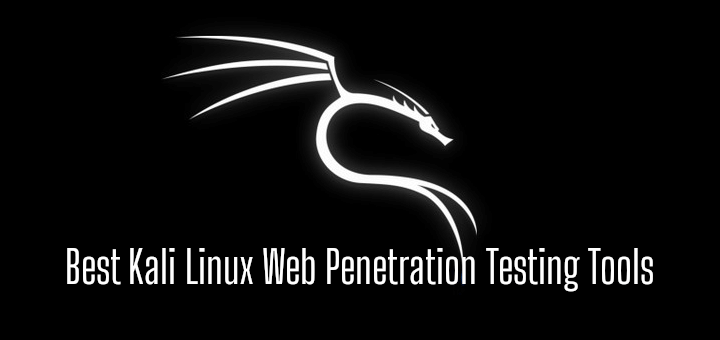

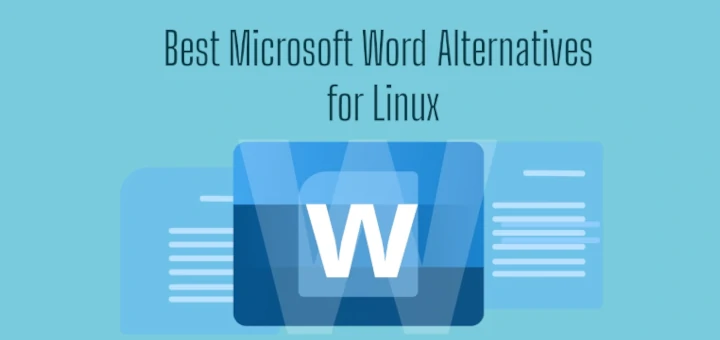
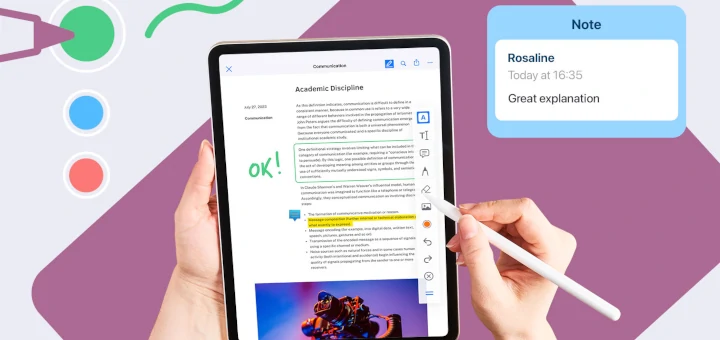
Thank you for sharing your article. It’s an insightful piece that highlights various team chat platforms.
I wanted to bring to your attention my article (
https://www.proofhub.com/articles/slack-alternatives) which covers a few tools that I believe could complement the list you have compiled. While your article covers a wide range of alternatives, I noticed a few notable omissions that might be worth considering for future updates.In particular, I suggest taking a look at Zoho Cliq, which offers unique features that differentiate it from the options already mentioned.
Additionally, ProofHub has gained significant popularity among teams due to its intuitive interface and robust functionality. Lastly, Fuze is another noteworthy tool that has received positive feedback from users for its seamless collaboration capabilities.
I understand that it can be challenging to include every tool in a limited list, and these suggestions are meant to complement the comprehensive work you have already done.
By considering these additions, you would further enhance the value of your article and provide your readers with a more complete overview of the available options.
Thank you once again for sharing your expertise on Slack alternatives. I hope you find these suggestions helpful for future updates. Keep up the excellent work!